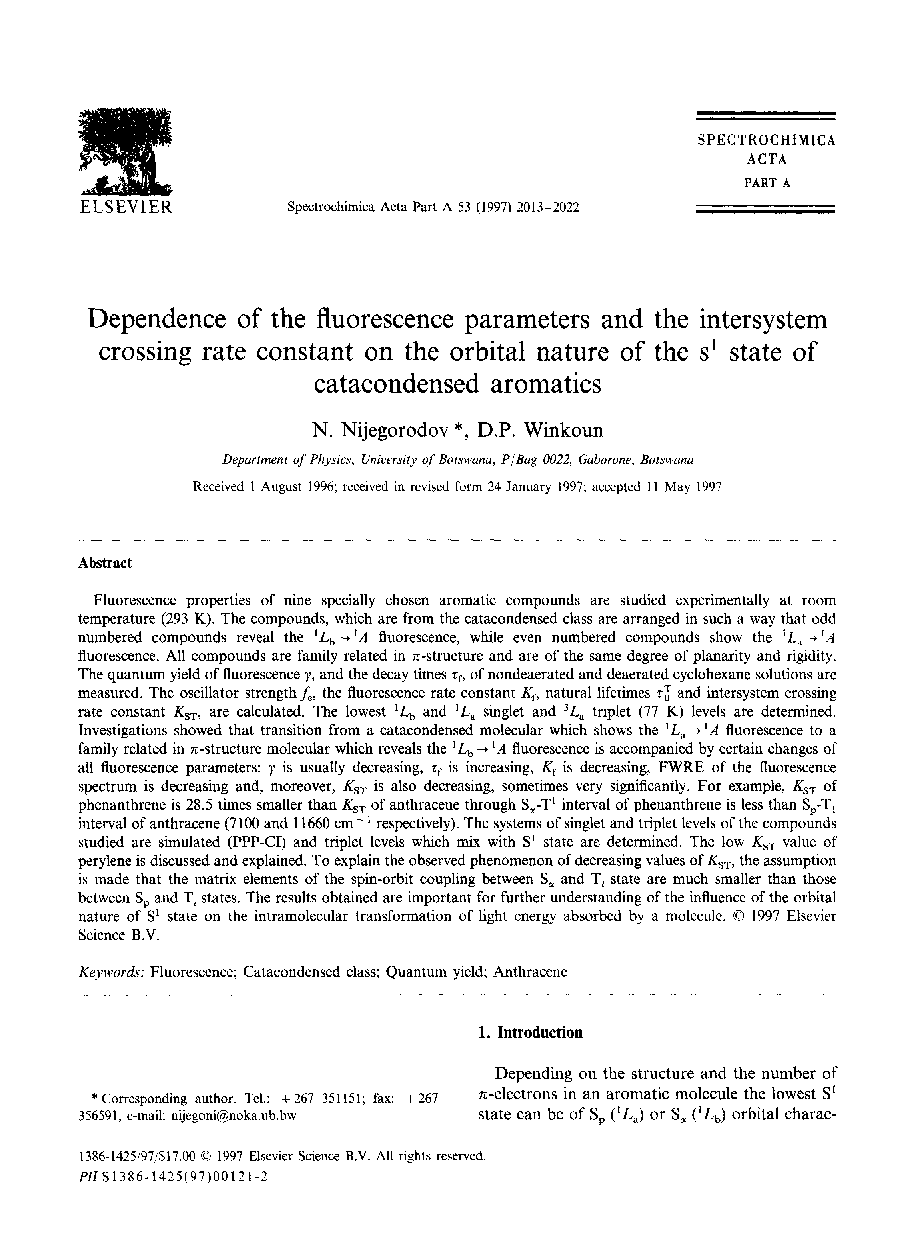| Article ID | Journal | Published Year | Pages | File Type |
|---|---|---|---|---|
| 1239215 | Spectrochimica Acta Part A: Molecular and Biomolecular Spectroscopy | 2013 | 10 Pages |
Fluorescence properties of nine specially chosen aromatic compounds are studied experimentally at room temperature (293 K). The compounds, which are from the catacondensed class are arranged in such a way that odd numbered compounds reveal the 1Lb→1A fluorescence, while even numbered compounds show the 1La→1A fluorescence. All compounds are family related in π-structure and are of the same degree of planarity and rigidity. The quantum yield of fluorescence γ, and the decay times τf, of nondeaerated and deaerated cyclohexane solutions are measured. The oscillator strength fe, the fluorescence rate constant Kf, natural lifetimes τ0T and intersystem crossing rate constant KST, are calculated. The lowest 1Lb and 1La singlet and 3La triplet (77 K) levels are determined. Investigations showed that transition from a catacondensed molecular which shows the 1La→1A fluorescence to a family related in π-structure molecular which reveals the 1Lb→1A fluorescence is accompanied by certain changes of all fluorescence parameters: γ is usually decreasing, τf is increasing, Kf is decreasing, FWRE of the fluorescence spectrum is decreasing and, moreover, KST is also decreasing, sometimes very significantly. For example, KST of phenanthrene is 28.5 times smaller than KST of anthracene through Sα-T1 interval of phenanthrene is less than Sp-T1 interval of anthracene (7100 and 11660 cm−1 respectively). The systems of singlet and triplet levels of the compounds studied are simulated (PPP-CI) and triplet levels which mix with S1 state are determined. The low KST value of perylene is discussed and explained. To explain the observed phenomenon of decreasing values of KST, the assumption is made that the matrix elements of the spin-orbit coupling between Sα and Ti state are much smaller than those between Sp and Ti states. The results obtained are important for further understanding of the influence of the orbital nature of S1 state on the intramolecular transformation of light energy absorbed by a molecule.
